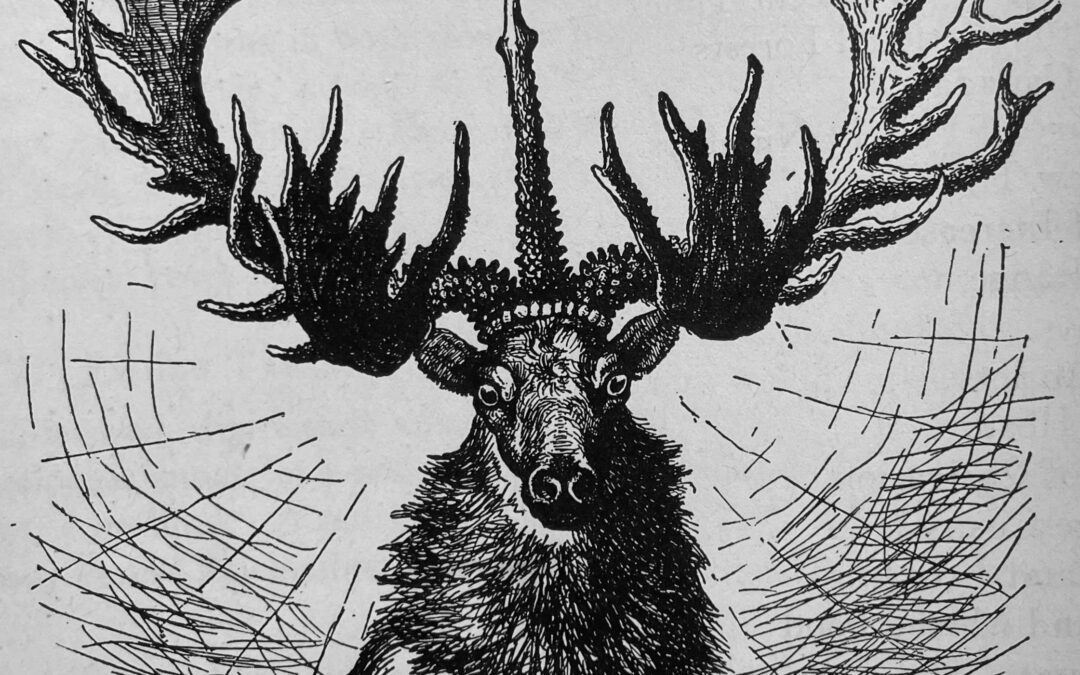The Wonder Buck by Ernest Thompson Seton
This is one in an ongoing series of nature essays from Lives of Game Animals (1925-1928) by Ernest Thompson Seton. Around the time when Seton wrote this, the elk population of New Mexico was down to only a few individuals. Numbers may now be in the 100,000 range. A few of them drop by my house during the winter. Given the chance, Nature can thrive. But as Seton told us, WE must be the ones who look out for the welfare of our wild animal companions.
The Slaughter/Vol III pg. 14
“The beginning of the 19th century saw the Wapiti perfectly described, catalogued, and – started on the road to extermination. There are few stories of blood lust more disgusting that that detailing the slaughter of the great Elk bands. The Sea-otter were hunted down because their robes were valuable, and there was no avoidable waste. The Deer of New England were killed off for the meat. But the wholesale massacre of the Elk, like that of the Buffalo, was carried out for the joy of seeing the great creatures fall in dying agony; and, in later years, by tusk-hunters who were too lazy to be hide-hunters.
It was easier to kill Elk than Deer because they were less shy. They betrayed their whereabouts by whistling. They were easier to hit, and in much of their range, could be pursued on horseback. They were more easily killed than Buffalo because, when alarmed, they ran not far; and one shot, well placed, would down an Elk. Thus, of the three, the Elk was the first to disappear in a given locality.”
The New Thought/Vol III pg. 23
“The dwindling process went on everywhere till about 1895. That was also the low-ebb year in many parts of America for many kinds of game, but it was also the year of the great awakening. The lesson of the vanished Buffalo had sunk deep into men’s minds. Thinking people everywhere recognized that, unless the methods practiced were stopped, all our fine game animals would go the way of the Buffalo. They saw, too that there was nothing to be gained by extermination, and much to lose. Game protective societies, founded in various parts of America by men who viewed with horror the approaching desolation of the wilds, have now secured sound legislation for the protection of harmless wild animals; and public sentiment has secured a rigorous enforcement of these new laws. Thus, in many regions, the process of extermination has been stopped.
And not only has an end been put to extirpatory hunting, but the awakening has found its logical climax in serious efforts to restock many of the deserted ranges. Several areas whence the species had long disappeared have been repeopled with Wapiti.….in all regions where adequate protection has been accorded, the number has increased; and there can be no doubt that, with a system of permanent safe havens, proper limitation of bags, and an absolute prohibition of repeating rifles and of the sale of game, we may keep these fine animals with us as long as we have wild land for them to range on – that is, for ever.”

